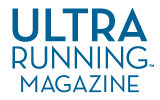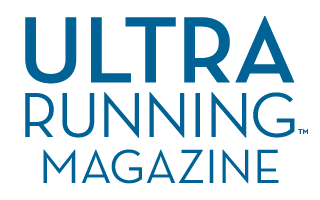
Welcome to the Three Dot Lounge, where we annually list our deep thoughts, cheap shots and bon mots from the Western States 100…
As always, the weather is the lede. The high temperature in Auburn on race day was 101 degrees, the seventh time in 43 years it has hit triple digits on race day. It was 53 degrees at the 5 a.m. start in Olympic Valley at 6,200 feet elevation and the overnight low on Saturday night in Auburn was a balmy 73 degree . . .
Three-peat: with the victory, Jim Walmsley became the third men’s runner and fifth overall to win the event three times in a row, joining Scott Jurek, Tim Twietmeyer, Ann Trason and Bjorg Austrheim-Smith. Jurek won seven in a row from 1999-2005, and Twietmeyer won three in a row from 1994-96. “They have a lot more than three in a row,” Walmsley said. “Those guys are legends.” (Trason won 10 in a row from 1989-98 and four straight from 2000-03. Austrheim-Smith won from 1981-83. Jim King, Tom Johnson and Nikki Kimball also have three wins, but not consecutively. . . .
Walmsley now has three of the four fastest times ever. He won by a whopping 85 minutes, almost identical to the margin of his 2018 win and the biggest margin of victory since Mike Morton won by 96 minutes in 1997 . . .
Year of the Women: Beth Pascall’s time of 17:10:42 was the second-fastest time ever, and her seventh place overall was the highest female finish since Nikki Kimball’s third in 2006 . . .
Ruth Croft of New Zealand was second woman and ninth overall, posting the fifth-fastest women’s time ever. Ragna Debats, a Dutch national living in Spain, was third woman and 10th overall, and had the eighth-fastest time ever . . .
Debats broke Ann Trason’s 19-year-old master’s record by 35 minutes, and was also the first master’s finisher – male or female – the first time in race history that a woman was first overall master’s . . .
This year was also the first time ever that three women finished in the top 10 . . .
All of the top 10 women broke 20 hours, matching the “cold year” of 2012 for that distinction. Incredibly, fully half of the top 30 finishers were women. Women made up 23% of the starters . . .
Five of the top seven women were from overseas, representing the U.K., New Zealand, The Netherlands, France and Zimbabwe . . .
It’s a Family Affair: Brothers Timothy Buse (Louisville, Colorado) and David Buse (San Diego, California) both had lottery luck – they had been trying for seven and five years, respectively – and both finished . . .
John and Katie Trent of Reno, Nevada, became the first father/daughter combo to finish in the same year . . .
Cody Lind of Challis, Idaho, placed fourth. His dad, Paul Lind, is a two-time finisher, and his grandfather, Dr. Bob Lind, was the original Medical Director for the race and was on the race’s Board of Directors for 30 years . . .
Cody and Brittany Peterson are a couple, and both finished fourth. As neither earned bragging rights, I guess they can just take turns doing the dishes for the next year . . .
The (very) Local Angle: Placer High School head football coach, Joey Montoya, finished his first 100-miler by running a lap around the field where he coaches . . .
Long-time volunteer Joe Steinmetz, the race’s Radio Communications Leader for the past few years, decided to put his radio aside for the day and run this year instead. He finished in a solid 26:10 . . .
The oldest finishers were Kuni Yamagata of Citrus Heights, California, at age 68 and Susie Kramer of Peoria, Arizona, at age 56 . . .
Damon Valenzona of San Diego and Shannon Howell of Simpsonville, South Carolina, were the top finishers from the lottery pool . . .
As always, the “Golden Hour” (starting at 10 a.m. on Sunday, the last hour of the race before the 30-hour cutoff) finishers drew the biggest number of trackside fans. There washigh drama at the end when Sean Mullett of Cleveland, Tennessee, and Paul Bonnett of Phoenix, Arizona, both made it to the finish with just over a minute to spare . . .
Due to COVID deferrals (overseas runners were offered a deferral to the 2022 race; all but 10 of them took it), only 315 runners started the race – well short of the 369 limit. The race plans to add 11 spots each of the next five years to get back to the allowed total. In the end, there were 208 finisher . . .
66% finishing rate. Interestingly, both men and women had the same finishing percentage . . .
There were only 57 sub-24-hour silver buckles awarded – the lowest number since 2006 . . .
A live broadcast featuring Dylan Bowman and Corrine Malcolm garnered high praise, and more than 10,000 viewers at a time were often tuned in. The broadcast started at 4:30 a.m. on Saturday, and concluded after 11 a.m. on Sunday. Even with some breaks, both Bowman and Malcolm were on the air longer than it would have taken either of them to run the whole 100 miles . . .
Incredibly, it felt for all the world that the COVID pandemic was in the rearview mirror. The race required vaccinations for all volunteers, and more than 1,500 complied. And 96% of the runners had been fully vaccinated as well . . .
On that happy note, we’re outta here for another year.





